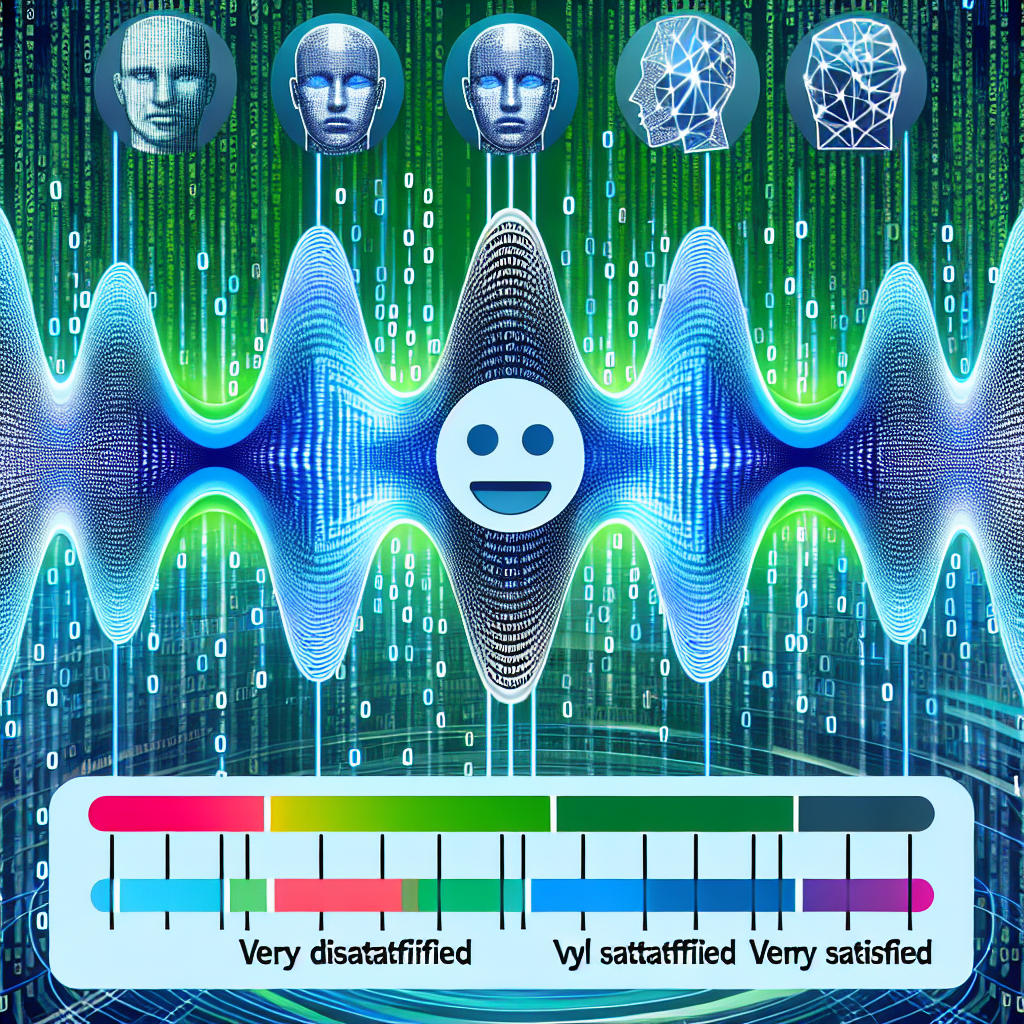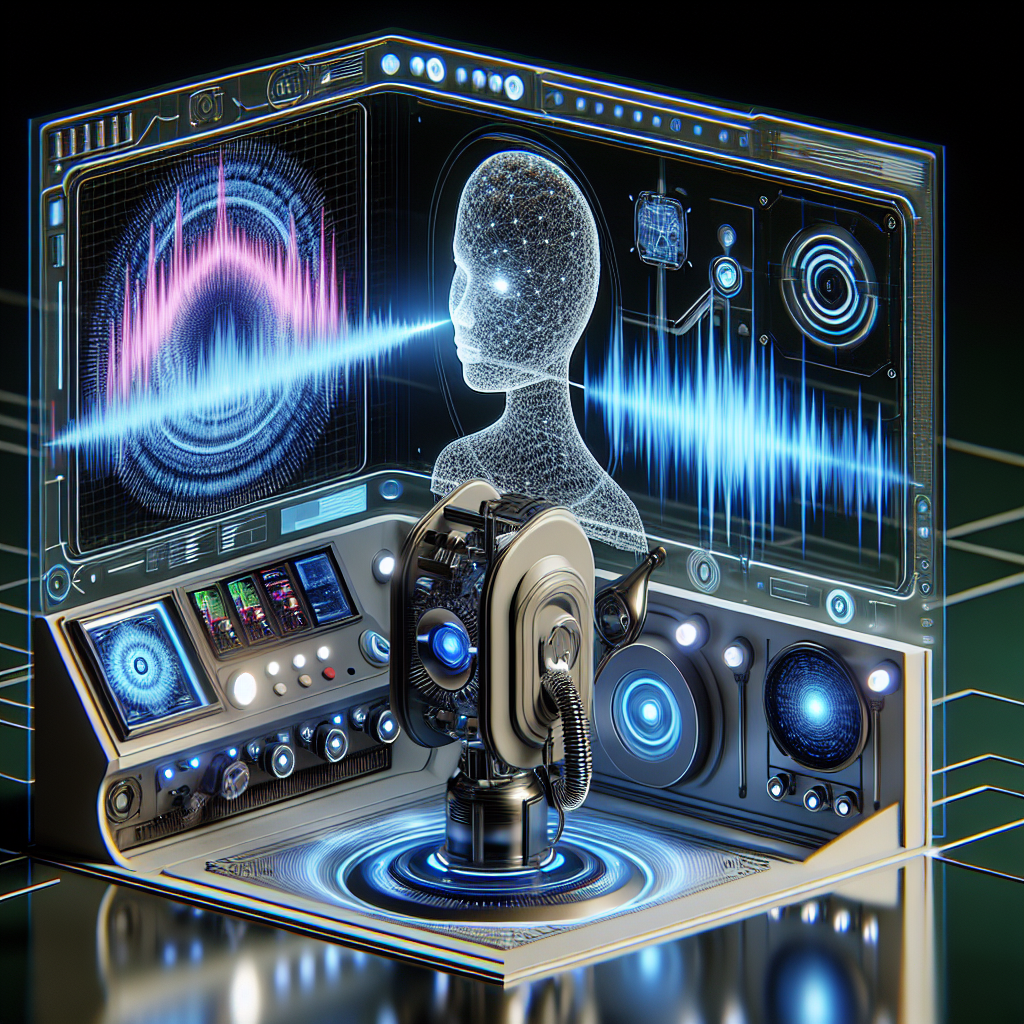
With the development of artificial intelligence (AI), several industries have witnessed unprecedented growth and innovations. One such application is the novel field of voice pattern recognition in customer satisfaction. Pattern recognition is a key subset of AI that enables machines to learn and predict from sensory inputs, and when it merges with auditory signals, it transcends into something called Voice Pattern Analysis.

Operating on the crux of acoustics and computational linguistics, voice pattern analysis enables AI to interpret not just what is communicated, but also how it's said. Inflections, pitch, and rhythm - AI comprehends these vocal cues to reveal a plethora of underlying emotions and can predict corresponding customer satisfaction levels effectively.
The use of AI in customer satisfaction has now evolved from nascent product recommendations to in-depth emotion analysis. This technology can capture subtleties in voice that any human may overlook, making it a potent tool for strategic business growth. Businesses get to understand customer sentiments in real-time and thereby, effectively refine their strategies in the pursuit of exemplary customer service.
Advanced technologies like Natural Language Processing (NLP) and Machine Learning (ML) algorithms form the bedrock of voice pattern analysis. A customer's interaction with the brand translates into an auditory data set for these algorithms. By considering various factors like the tone of speech or pauses in the conversation, these models can determine the satisfaction level of a customer with an incredible degree of accuracy.
The realm of voice pattern analysis is still unfolding with new advancements every day. Today's businesses are on the precipice of a revolution that stands to vastly improve their understanding of customers and, subsequently, their ability to meet their needs efficiently with the help of AI.
Customer satisfaction prediction has taken a remarkable leap forward with the application of Artificial Intelligence (AI). The most prominent subset of AI at play in this scenario is voice pattern recognition, an ability to discern and interpret human speech patterns. Two fundamental technologies play the key role here: machine learning models and natural language processing (NLP).
Machine learning is a subfield of AI that empowers systems to learn from data and improve from experience, without being explicitly programmed. Various types of machine learning algorithms include supervised learning, unsupervised learning, semi-supervised learning, and reinforcement learning. Of these, supervised learning models have frequently been leveraged for voice pattern recognition, as they can be trained to match voice patterns with corresponding satisfaction levels based on labeled training data. In practice, this might involve using deep learning models, like Convolutional Neural Networks (CNN) or Recurrent Neural Networks (RNN).
On the other hand, Natural Language Processing deals with the interaction between computers and human language. NLP bridges the gap between human communication and computer understanding. In voice pattern analysis, NLP helps extract the underlying sentiments, tones, emotions or stresses in a spoken language, which are vital inputs in predicting customer satisfaction levels. Systems trained using NLP also have advanced capabilities such as speech recognition, speech-to-text conversion, and semantic interpretation.
In conclusion, the amalgamation of machine learning models and natural language processing capabilities have become indispensable technological foundations for predicting customer satisfaction accurately from voice patterns. While the approach might require a steep learning curve, the potential benefits in the form of exceptional customer service outcomes could well be worth it.
Voice pattern analysis has emerged as a game-changing technology in customer service, with companies across various sectors successfully employing this innovative Artificial Intelligence (AI) application to enhance customer satisfaction considerably. By effectively predicting customer satisfaction levels, these businesses have seen visible improvements in customer relationships and an overall growth in their respective markets.
A prime example can be found in the telecommunications industry, where companies like EE have used advanced voice pattern analysis to predict how interactions will impact customer satisfaction. Advanced algorithms analyze the tone, pitch, and speed of the agent's speech, along with the content of the conversation. The results have been profound, with the company witnessing a significant reduction in customer complaints, all thanks to AI.
Further afield, in the hospitality sector, establishments like Intr-UN Ltd. are making use of voice pattern recognition. The company’s smart assistant, built on IBM Watson, interacts with customers over the phone and exhibits empathy towards the user's sentiment. This has not only led to improved customer reception of the technology but also allowed the company to tailor a more personalised customer experience.
Banking giants such as the American Banker, have acknowledged the potential of voice pattern analysis in their performance strategy, aiming to heighten customer satisfaction while maintaining high-security measures. This efficiency in identifying the customer’s emotional state has provided valuable insights for customer service representatives, enabling more effective interactions and a subsequent uplift in overall customer satisfaction.
As these case studies demonstrate, AI-powered voice pattern analysis considerably contributes towards predicting and enhancing customer satisfaction. Looking ahead, there's no doubt that we will see a rising number of companies from diverse industries embracing this technology, reaping the multifaceted benefits it provides.
Interactions with customers play a significant role in shaping their satisfaction rates. Among the variety of metrics businesses use to gauge customer satisfaction, one particular area gaining prominence is utilizing voice pattern analysis through Artificial Intelligence (AI). AI applications in customer service not only help in predicting customer behavior, but also guide businesses in tailoring services to meet specific needs.
Integrating this innovative technology into your customer service framework involves a multi-step process. The first crucial component is selecting the right AI voice pattern analysis tool. Voice Analytics Software help businesses transcribe and analyze customer voice data, extracting useful insights. Select a tool that aligns with your operational needs, targets your customer base, and fits your budget.
Once on board with a suitable tool, direct your attention to incorporating it into your existing workflow. AI tools should simplify rather than complicate operations. It is paramount to ensure that the team responsible for customer interactions understands how the AI tool works. Provide thorough training sessions on the tool usage to support effective application.
With a good understanding of the tool, the next focus should be on optimizing customer interactions. This could involve strategies to encourage customers to articulate their concerns clearly and sufficiently, to generate comprehensive and valuable voice data. Additionally, it's crucial to remember data protection and privacy regulations when collecting and analyzing voice data.
The final step in this integration process is implementing feedback cycles and improvements. Once the system is operational, monitor and analyze the effectiveness of the AI tool. Use these insights to make modifications and improvements, creating a dynamic, evolving customer service approach resonating with your customer demands.
Voice pattern analysis, coupled with AI, has the potential to revolutionize the way businesses perceive customer satisfaction. By applying it effectively, it can lead to enhanced customer engagement, apt service improvements, and ultimately, stronger relationships with customers.
Adopting voice analysis technology for predicting customer satisfaction does not come without its challenges. However, with proper tactical planning and execution, these difficulties can be tackled efficiently. Let's delve into the primary hurdles and promising solutions in implementing this innovative approach.

First on the list is the concern related to privacy. Customer calls are recorded and analyzed for predictive modelling, raising questions of confidentiality and data security. General Data Protection Regulation (GDPR) and other similar regulations necessitate explicit consent for such processing of personal data. Thus, transparency and disclosure is the key. Companies must ensure they obtain informed consent from customers upfront and respect preferences throughout the interaction.
Another concern revolves around the technological limitations in dealing with varied accents, dialects, and speech impairments. AI technology tends to encounter difficulties in accurately interpreting human language in such cases. Machine learning models need large volumes of diverse data to overcome this issue. Technology giants, such as Google and IBM, are currently investing heavily in advancement of voice recognition technology to solve these complexities.
Challenges also exist in situations where background noise interferes with voice quality, making it harder for models to accurately analyze and gauge sentiments. Here, noise cancellation technologies and improved model training can prove to be effective solutions.
In conclusion, while these challenges can create hurdles in the adoption of voice pattern-based customer satisfaction techniques, a holistic strategy involving technological advancements, planning, and suitable privacy measures can mitigate the associated risks and drive towards improved customer experience.
As we venture into the future, the role of artificial intelligence (AI) in interpreting voice pattern data is set to undergo significant transformations. Predicting customer satisfaction, once a subjective metric dependent on feedback forms and service ratings, is now a scientific process facilitated by AI. Voice pattern analysis, spearheaded by high-precision AI algorithms, has the potential to revolutionize industries and enhance customer service standards.
AI advancements have resulted in software like Speex.ai and Symphony AyasdiAI, capable of identifying and analyzing nuanced voice patterns. This sophistication allows for accurate prediction and even real-time adjustment of customer service approaches. Within the next decade, we can expect these technologies to become more refined, making customer satisfaction prediction more reliable and actionable.
The impacts of these advancements would be far-reaching. Retail, e-commerce, and customer support industries stand to gain the most explicitly, as these are primarily influenced by customer satisfaction. AI could help these businesses detect dissatisfaction from a call or interaction and instantly provide service reps with tips to improve the conversation.
Additionally, AI voice pattern analysis would hold immense potential for industries like healthcare and legal. In healthcare, it could be used to predict a patient's satisfaction with their care. In the legal field, it could be used to evaluate witness credibility during a deposition or trial.
In conclusion, the role of AI in voice pattern analysis is set to evolve particularly in the avenues of customer satisfaction prediction. As this technology continues to develop and bridge the emotional intelligence gap, it will have transformative impacts across various sectors, leading to improved customer service standards and overall business efficiency.
Start your free trial for My AI Front Desk today, it takes minutes to setup!








